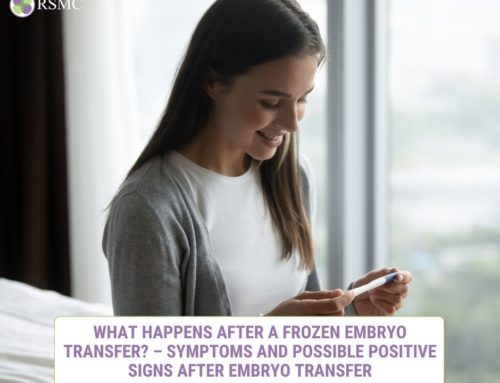Medical science can do a lot of wonderful things – and that is what happened to Tina when she conceived through frozen embryo transfer and gave birth to a healthy baby using a 27-year-old embryo.
Tina Gibson, aged 28, set a new record last month when she gave birth to a baby girl named Molly using an embryo preserved back in October 1992. The frozen embryo was thawed after 27 years and transferred into Tina’s womb in February this year.
According to Tina and her husband, Ben Gibson, the embryo was obtaWHAT EXACTLY IS EMBRYO DONATION?
ined from the National Embryo Donation Center in Knoxville, Tennessee.
“We didn’t realize until it made the news that it was kind of a big thing,” Tina said.
Molly’s successful implantation and birth broke the record for the longest time an embryo had been frozen before being transferred and resulting in a successful birth. The past record was held by Molly’s elder sister, Emma Gibson, who was born in 2017 from a 24-year-old embryo.
Emma’s birth also got Tina in the news back in November 2017. She revealed in her interview with CNN that she was surprised to discover that she’s just a year older than the embryo used for her IVF.
“This embryo and I could have been best friends,” joked Tina before adding that she wanted a baby so badly and did not “care if it’s a world record or not.”
Ben and Tina Gibson had been unable to have children for several years. Ben was suffering from cystic fibrosis, a health condition responsible for infertility in men. And the couple feared that they could pass the disease to their unborn baby. This was the reason they considered embryo adoption.
Emma and Molly are both full siblings. Tina commented that
“The fact that we are holding these miracles, it is unbelievable that God would just pour his blessings on us like that. We don’t deserve it, that’s for sure.”
WHAT EXACTLY IS EMBRYO DONATION?
As per the American Society for Reproductive Medicine (ASRM), couples trying to have a baby through IVF sometimes have extra fertilized eggs or embryos preserved and stored for future frozen embryo transfer. But many of those eggs end up not being used.
Many intended couples will have one or more unused embryos to freeze after completing their cycle of IVF. The younger a woman is when undergoing IVF, the greater the possibility of having high-quality embryos to freeze. Based on the number of children she wants, she can have many of these embryos left over after she’s completed her own family.
However, a donor embryo may also be created from donor eggs and donor sperm for the sole purpose of the donation. And there are several things a couple can do if they don’t want to use all of their embryos.
- Donate to intended parents looking to have a baby
- Donate them to research
- Leave them in their frozen state or
- Thaw them and allowed them to be destroyed
A lot of couples decide to freeze their unused embryos – and keep them frozen. A 2018 study even estimated that there are about 1 million human embryos presently stored in the US alone.
Today’s egg freezing technology is much better, and IVF is more accessible to those in need of it. This is why it’s now more common for people to have extra embryos than what they need to grow their families. Therefore, embryo donation is becoming more and more common.
This is something that’s occurring more often than a lot of people think (just not necessarily with embryos that had been frozen for more than 27 years).
HOW CAN AN EMBRYO BE FROZEN FOR 27 YEARS?
Previously, embryos were frozen using a slow freezing technique, which may result in the formation of ice crystals and potentially damage the embryos. But most programs now use a fast-freezing technique called vitrification, where the embryos are cooled fast, causing no damage.
However, embryos that were preserved using slow freezing methods can also survive the freezing and thawing process. When a frozen embryo is adopted, it’s thawed and transferred into the woman’s uterus, like any other IVF embryo.
It’s worth noting that it’s rare for donor embryos to be that old. The protocols used for freezing embryos 27 years ago are not very good, so the chance of embryos surviving the freezing and thawing process is small.
If you are also interested in exploring this family-building option, there are several ways you can go about it. However, it’s advised that you first speak with your doctor or a board-certified reproductive endocrinologist before making any decision. If you want to learn more about the process and where to get embryos, please consider a Fertility consultation with RSMC
You can also visit our website for more useful resources.























